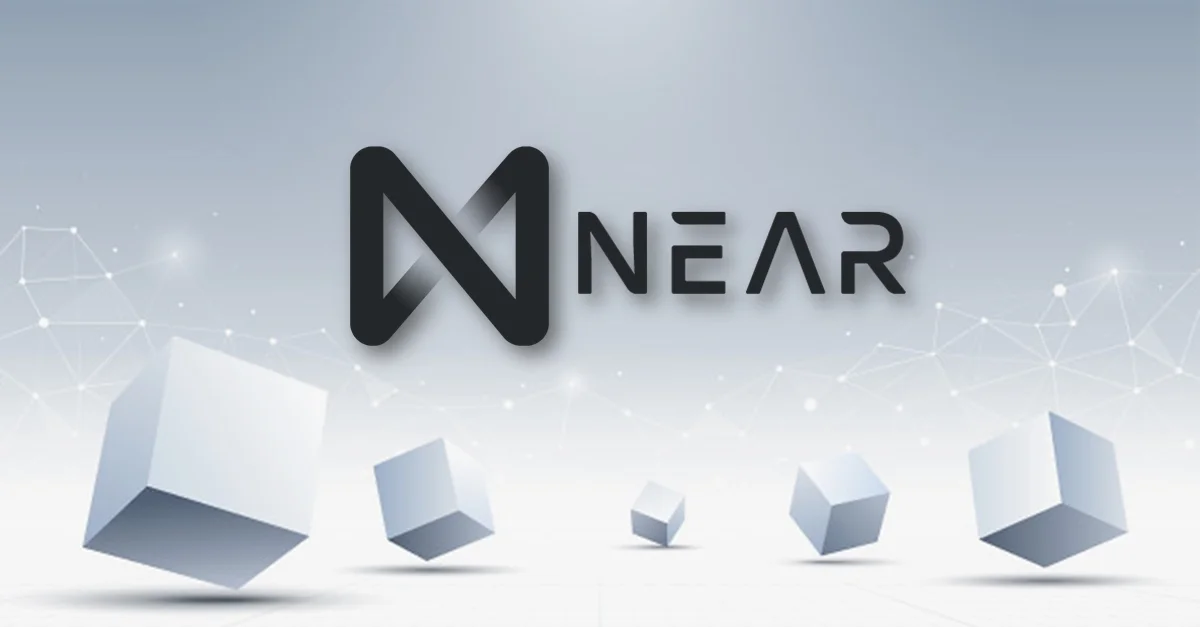
1. Research Report Highlights
1.1 Investment Overview
Through its complex sharding architecture, the NEAR Protocol is committed to providing a user experience similar to Web 2.0. Its team's development capabilities and vision are at the forefront of the entire industry. Collaborations with Polygon for zkWASM, EigenLayer for fast settlement sorters, the independent construction of NEAR DA, and the ultimate goal of chain abstraction, as well as its continuous iteration and improvement in sharding architecture and emphasis on consumer applications, all demonstrate and prove its pragmatic attitude and focused pursuit of technology in the process of thinking and exploration.
From on-chain data, it can be observed that NEAR's TVL has entered a positive growth trend, with developers, trading volume, and active user numbers all reaching new highs (except for Mingwen's market). Although the data is mainly driven by applications with high traffic, it reflects the diversity and compatibility of its ecosystem. Combined with what it is doing, NEAR has the opportunity to capture higher attention and expectations in the market in the future, focusing on narrative points such as Layer1, ZK virtual machine, DA, and chain abstraction, and is likely to achieve better price performance in the next bull market cycle. Given the potential overall market correction, it is recommended that investors consider multiple factors when making judgments and decisions.
1.2 Valuation Explanation
NEAR reached a peak of $20.15 in the last bull market, with a market value of about $6 billion. The current price is around $5.6, reaching a high of about $6.2, representing an almost twofold increase compared to the previous two cycles. Based on the circulating supply of 1 billion tokens, the current market value is already the same as that of the previous bull market. This performance is only under the current ETF main market trend. It is expected that when the next bull market cycle's main uptrend arrives, NEAR will likely have better price performance, possibly surpassing ETH. Given the potential overall market correction, it is recommended that investors consider multiple factors when making judgments and decisions.
1.3 Main Risks
Legal risks: Similar to other projects in the industry, if NEAR faces issues such as being considered a security, it may put pressure on the token itself.
Inadequate narrative: In the overall trend, if the market does not recognize NEAR's narrative or fails to demonstrate its ecological vision, it may lead to weak upward momentum in token prices.
Unexpected progress: NEAR's second phase has been delayed from 2023 to 2024, and the subsequent development and implementation are uncertain, with the possibility of further delays, thereby negatively impacting market recognition and perception of it.
2. Project Overview
NEAR is a Layer1 based on sharding technology, aiming to make transaction processing more efficient, scalable, and affordable, which sets it apart from other blockchains like Ethereum.
2.1 Business Scope
NEAR is positioned as a Layer1, striving to make the esoteric blockchain accessible, providing developers and users with a simple and friendly user experience through its underlying scalability, intermediate layer optimization, and mature tools at the application layer. It aims to provide high TPS and a user experience no different from Web2. The current ecosystem is diverse, and overall data has shown positive growth.
2.2 Founding Team
In January 2024, NEAR underwent a 40% reduction in its team. Currently, the team consists of approximately 40 members, organized into Near Protocol, NEAR Foundation, and the development team Pagoda. Polosukhin stated that despite the downsizing, the financials of the Near Foundation are "still strong and well managed," including $285 million in cash, 305 million Near tokens, and $70 million in investments and loans.
Illia Polosukhin: Co-Founder, holds a Bachelor's and Master's degree in Computer Science from Kharkiv Polytechnic Institute. In 2014, he served as an engineering manager in Google's research department, responsible for deep learning. Founded NEAR in June 2017.
Alexander Skidanov: Co-Founder, holds a Master's degree in Computer Science from Irkutsk National Technical University. He previously worked as a software development engineer at Microsoft and spent five years researching MemSQL at a database company, primarily focusing on distributed databases, laying the foundation for his blockchain technology. Co-founded NEAR with Illia in June 2017.
David Norris: CFO NEAR Foundation, holds a Bachelor's degree in Mathematics, Accounting, and Financial Management from Loughborough University in the UK, with approximately 20 years of experience in finance and accounting. He has worked as a financial analyst at firms such as KPMG, European Arab Bank, Unilever, and the Royal Bank of Scotland. He joined NEAR as a financial controller in June 2022 and was promoted to CFO in January 2024.
2.3 Investment Background
NEAR's most recent financing was in April 2022, with a funding amount of $350 million. Its investment institutions have broad coverage, including most of the top VCs in the industry, with major lead investors being Three Arrows Capital, Tigar Global, and A16Z, among others.
Due to the Luna incident, Three Arrows Capital's assets were liquidated, and its NEAR assets totaling 13.9 million tokens have been liquidated by Genesis.
2.4 Project Development Roadmap and Milestones
The team originally planned to release the second phase of sharding in 2023, but it was delayed until January 2024 to release the testnet for the second phase. Its roadmap has experienced some delays. In 2024, the team hopes to primarily improve NEAR's usability, scalability, and decentralization.
Stateless Verification: It adjusts the original Nightshade sharding design to avoid implementing fraud proofs, while significantly improving the performance of each shard by putting the state into memory. The team expects the introduction of stateless verification to significantly increase the throughput of each shard and prepare for the continued growth of NEAR's usage (expected delivery in the second quarter).
Congestion Control and Transaction Priority: Providing a good user experience during short-term network congestion is crucial, including localized congestion to prevent natural gas price increases from affecting the entire network and allowing users to prioritize their transactions during congestion (if they are willing to pay higher transaction fees).
Account Aggregation Support: Allowing users to control accounts on different chains using a single NEAR account, which is an important pillar of NEAR's chain abstraction vision. It requires signing the payload through MPC and a new API to facilitate the asynchronous nature of chain signatures.
zkWASM: The goal is to build a prover for WebAssembly smart contracts. This can be used as part of the measures to prove NEAR state transitions in ZK proofs. zkWASM also provides wasm as an alternative execution environment for EVM on L2.
Data Availability Improvement: NEAR launched NEAR DA in early November 2023 and plans to further improve the efficiency of NEAR DA. These improvements include introducing KZG commitments to avoid data availability fraud proofs and real-time bridging to allow verification of data availability on Ethereum.
Ethereum Wallet Support: Native support for wallets like MetaMask on NEAR enables the attraction of more users to use NEAR and makes it more consistent with Ethereum. This requires protocol changes to natively support Ethereum addresses and support RLP serialization for Ethereum transaction processing.
Future Research on Sharding: Exploring directions include synchronous sharding and ZK-centric sharding. Synchronous sharding can achieve synchronous execution of smart contracts, addressing the pain points of asynchronous execution, while ZK-centric sharding uses zero-knowledge proofs to verify state transitions in different shards, improving the protocol's scalability and decentralization.
3. Business Situation
3.1 Official Website Data
We compared AVAX and NEAR and found that NEAR's website traffic in the past three months is 34% higher than AVAX, with a daily traffic of around 31,000 people. The top three sources of traffic are Indonesia, the United States, and India.
3.2 Social Media Data
3.3 Community Data
3.4 Collaboration Situation
Collaboration with EigenLayer: Collaborating on the development of a fast settlement sorter network based on Ethereum Layer2. The NEAR-Ethereum Rainbow Bridge built by NEAR will also use EigenLayer's avs service, with the testnet expected to launch in the first quarter of 2024.
Collaboration with Polygon: Collaborating on the research of zkWASM, expected to be launched in 2025. Developers using the open-source code library Chain Development Kit (CDK) from Polygon can use zkWASM as a prover. NEAR can use zkWASM to generate state transition proofs, reduce the burden of ZK execution on shard nodes, improve proof generation efficiency, and thereby increase shard throughput.
4. Product and Competitive Analysis
4.1 Track Potential
In the new round of market cycles, public chain narratives are an unavoidable theme, and chain abstraction narratives may become an important branch of landing evolution. Given its current overall market trend and the rotational performance of various sectors, NEAR, with a good fundamental situation, is expected to have better expectations and performance in the new round of market cycles, becoming an important component of the public chain track.
4.2 Competitive Landscape
NEAR emerged as a public chain project in the previous market cycle, with Avalanche as its benchmark. Currently, NEAR ranks relatively lower, but it also presents more opportunities.
Comparing active addresses, NEAR's ecosystem is significantly better than AVAX, gradually forming its own unique and diverse ecosystem.
4.3 Product Features
Sharding Nightshade
NEAR's main technical feature is sharding technology, which is also a key differentiating factor of the NEAR Protocol.
Nightshade, launched in November 2021, allows validators to handle transactions only within specific shards, paving the way for theoretically unlimited scalability.
On January 30, 2024, the NEAR team confirmed the launch of the second phase of the sharding testnet, with the main feature being stateless implementation. NEAR validators will no longer need to maintain the state of shards locally and can retrieve all the information required for state changes or "state witnesses" from the network. This part will officially go live on the mainnet in May.
The team is also researching the integration of ZK technology into the sharding improvement roadmap, which can achieve mutual cooperation between nodes generating ZK proofs and light nodes verifying proofs.
Originally, Ethereum's roadmap was to implement sharding technology, which essentially involves the distributed storage of database information. However, due to the complexity of the technology, it was abandoned in favor of the Layer2 technology roadmap.
Chain Abstraction:
Chain abstraction is a further abstraction of account abstraction, aiming to hide the specific chains used by users, reduce users' perception of using blockchain infrastructure, and provide users with a Web2-like experience without having to worry about which application is on which chain, as well as a series of complex operations such as signing and private keys.
**BOS supports running in multiple languages on multiple blockchains. In the future, with the implementation of chain abstraction, NEAR as the entry chain can call accounts bound to other chains for signing. This means that on NEAR, users can use Uniswap and sign transactions using Ethereum accounts.
Super Wallet supports browsing all DApps with a single wallet, without the need to switch chains.
Account Aggregation Technology is used to initiate the intent of any chain through NEAR and then sign transactions of any chain through MPC technology.
zkWASM:
NEAR's planned development is influenced by ZK technology, with plans to introduce ZK technology to compress states in future sharding technology. zkWASM is its virtual machine technology, capable of supporting mainstream development languages and running smart contracts developed in mainstream languages within the virtual machine, and then generating zero-knowledge proofs.
In the future, zkWASM will be one of the three optional virtual machines for Polygon's zk Layer2 development CDK, and zkWASM will also run on NEAR to help nodes generate zero-knowledge proofs and reduce the burden of proof generation on shard nodes.
From the progress of product planning, it can be seen that the NEAR team has not been significantly affected by market cycles and has been exploring the industry, following the latest industry technologies and improving the future development direction of NEAR. Sharding technology is currently in the second phase and is expected to go live in Q2-Q3, greatly improving the efficiency of validators. Chain abstraction belongs to the "End Game" type of concept, providing users with a Web2-like experience. zkWASM is a future development of NEAR to improve the efficiency of ZK proofs for shard nodes and can also serve as a zk virtual machine runtime environment for Layer2.
4.4 Developer Situation
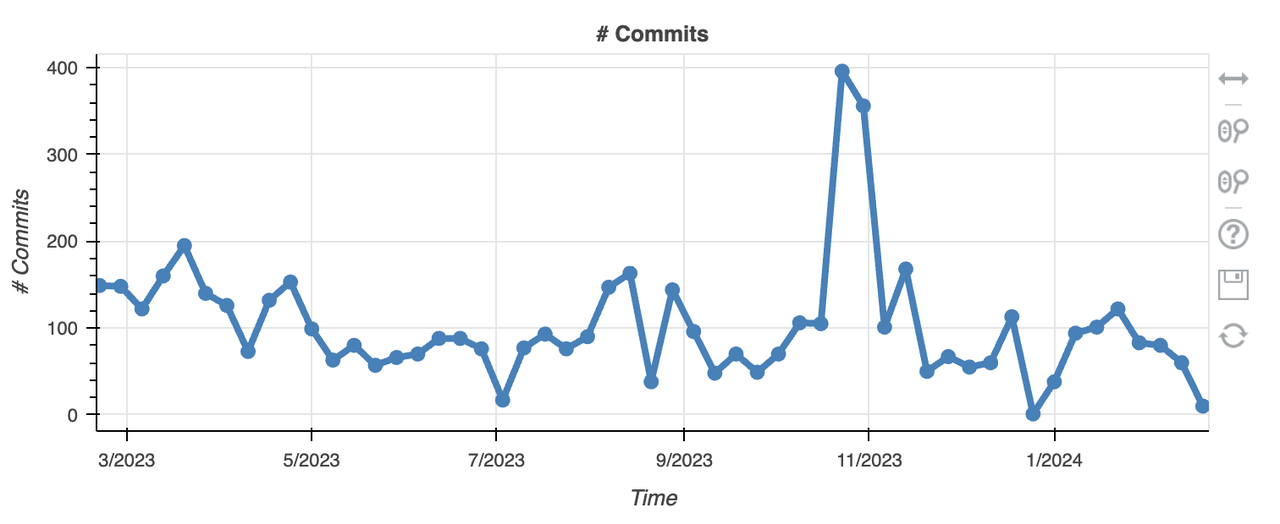
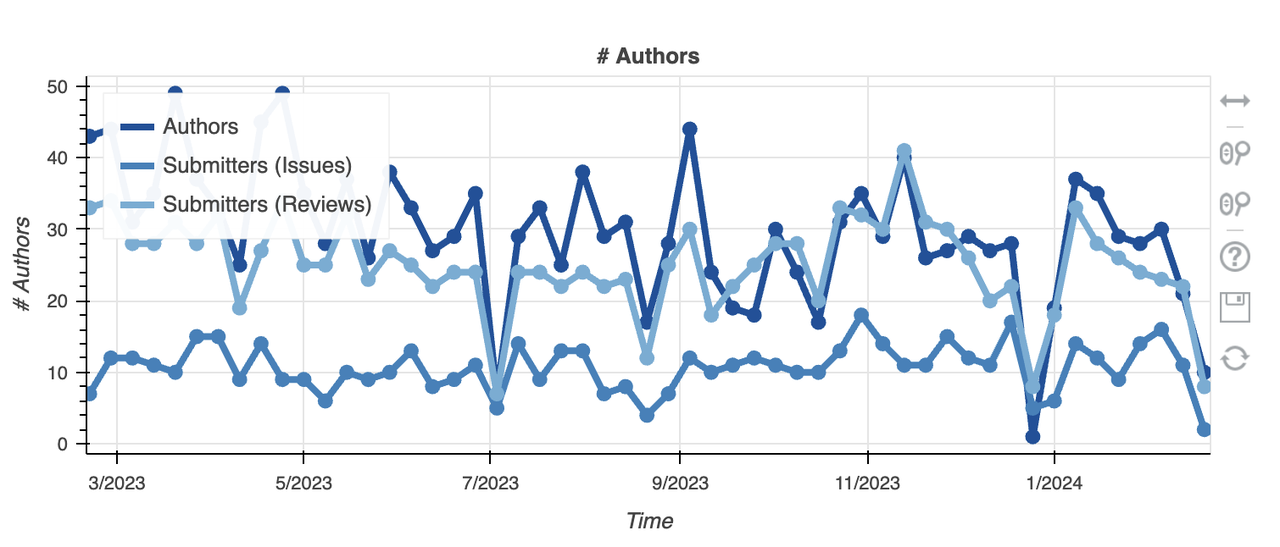
From the perspective of code commits and active data, NEAR's development progress has remained steady, apparently unaffected by layoffs.
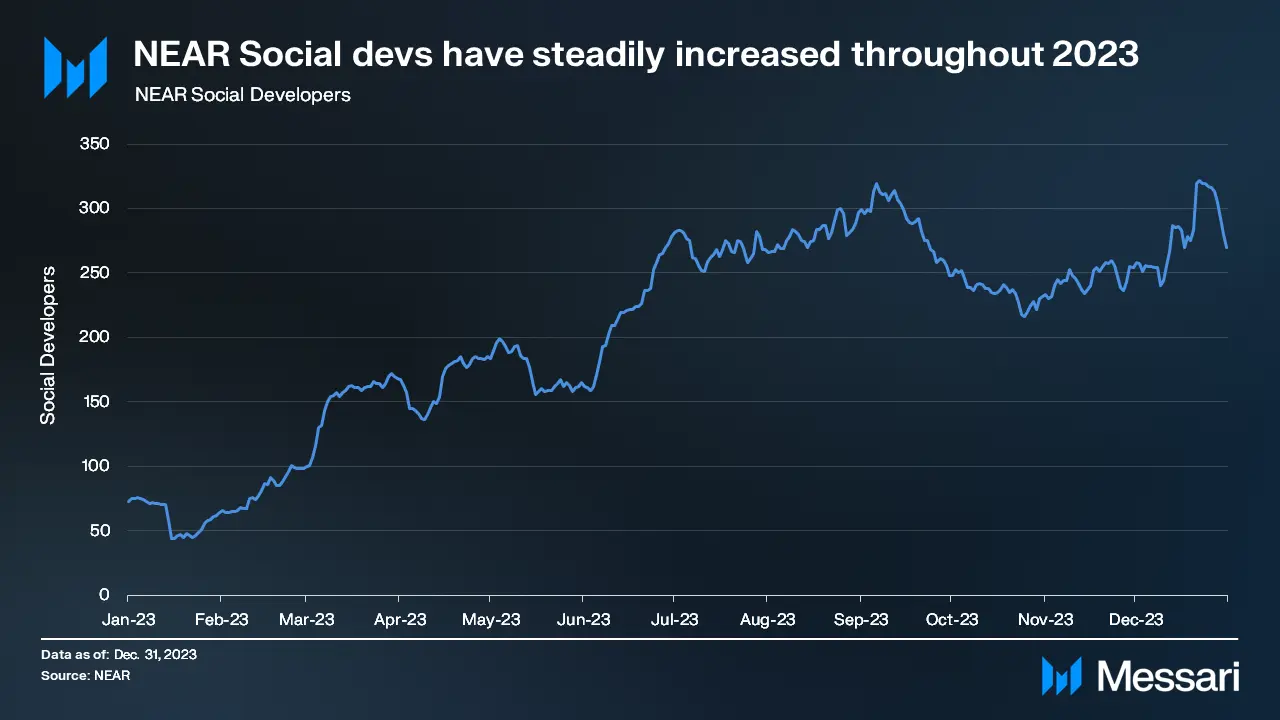
In addition, according to Messari statistics, the number of developers building on NEAR has been steadily increasing since January 2023.
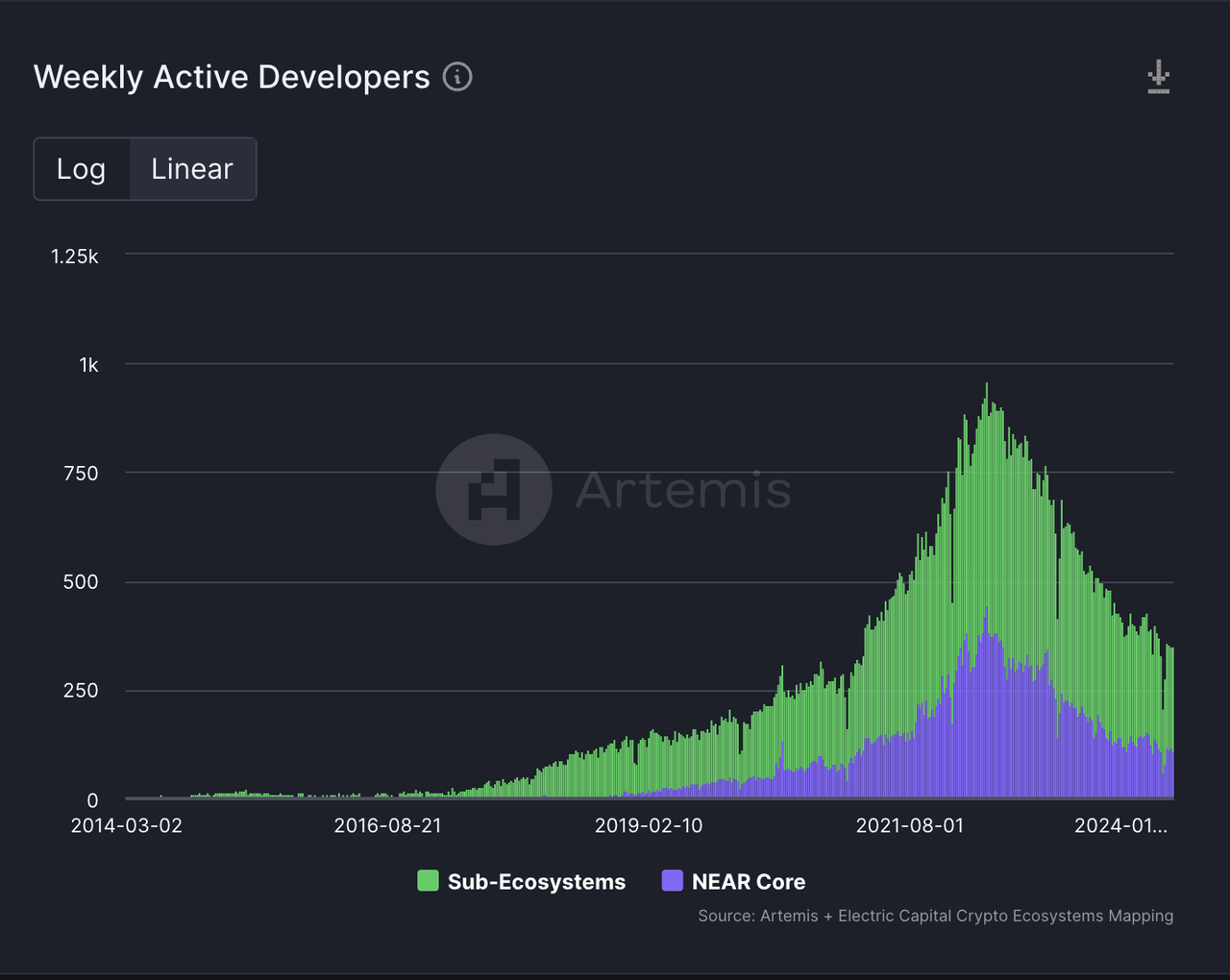
In the longer cycle observed by Electric Capital, there has been a significant decline in developers for all chains in the industry, with active developers decreasing by half from the previous cycle peak. However, NEAR's developers have only decreased by one-third from the previous cycle peak, indicating a downward trend that needs to be further observed.
4.5 Ecosystem Development
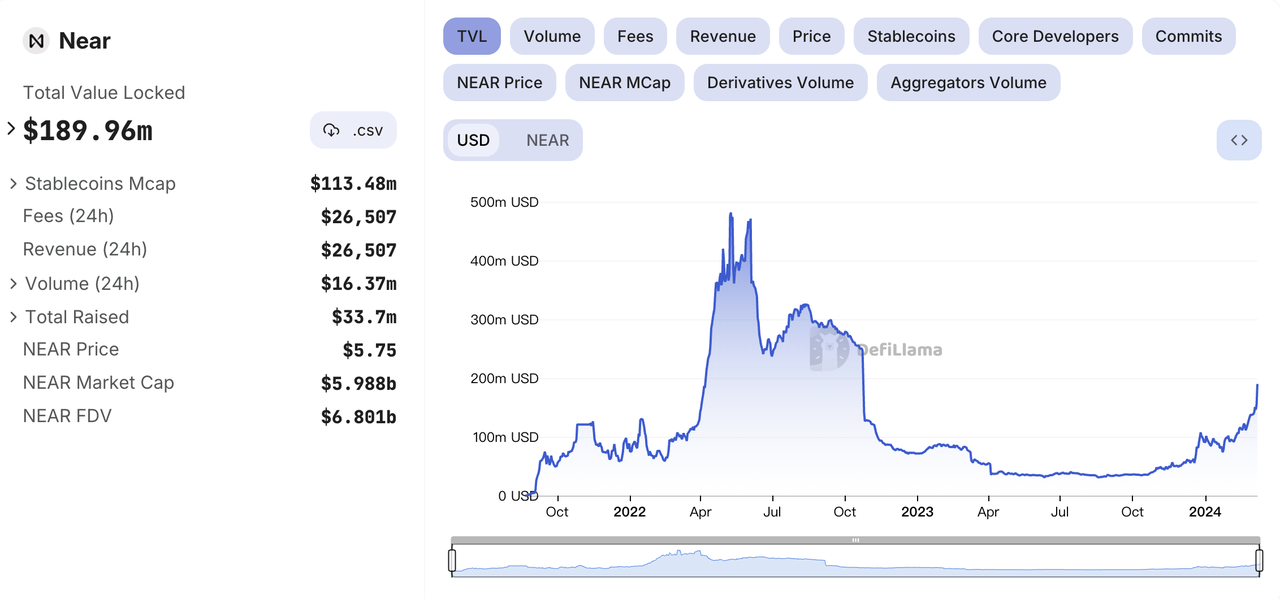
As of March 7, 2024, the TVL of NEAR's DeFi ecosystem is approximately $190 million, showing strong growth in the recent period.
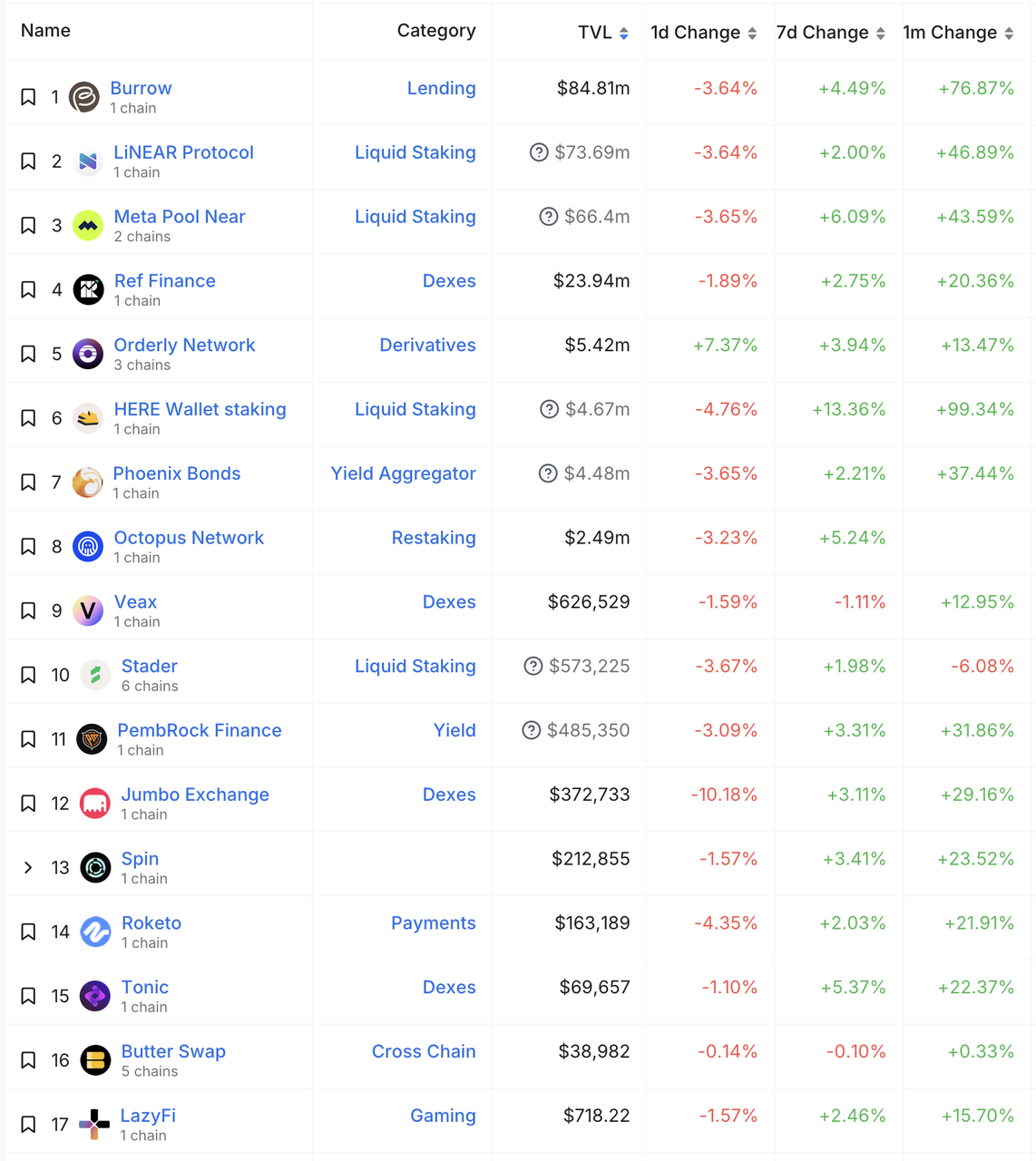
NEAR's ecosystem diversity is also strong, with major projects including Burrow (lending), LiNEEAR (LSD), Ref Finance (DEX), and others.
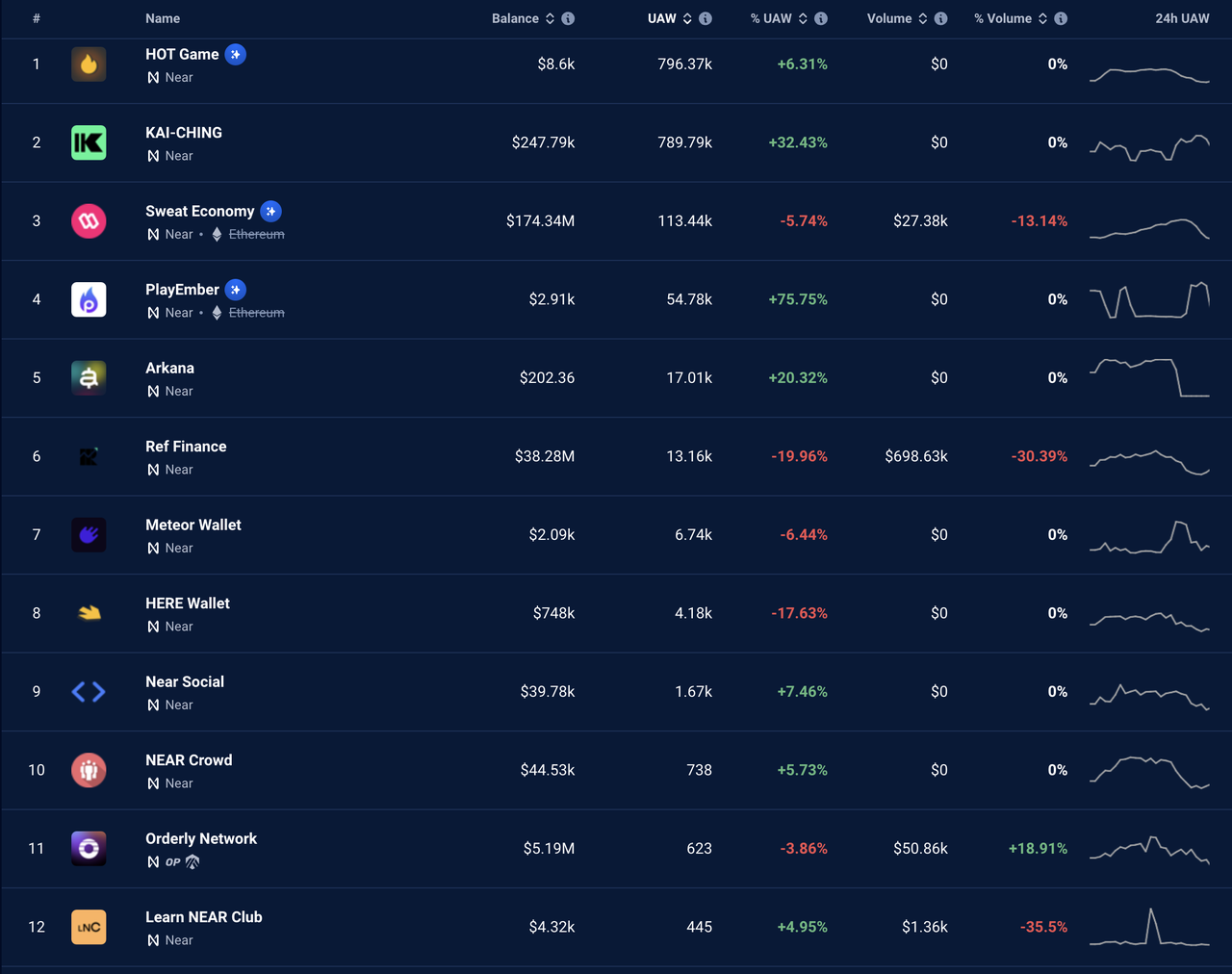
Dapp Radar statistics:
The project with the highest weekly active addresses is Hot Games, a wallet on Telegram built on NEAR.
Next is KAI-CHING (KAIKAI), a shopping app that allows users to purchase products at lower prices.
Ranked third is Sweat Economy, a Walk-To-Earn app.
Additionally, KAIKAINOW is a project based on the KAI-CHING token, mainly providing users with lock screen wallpapers and rewarding users with tokens through advertisements. According to official NEAR statistics, this project has contributed a significant proportion of DAU to the NEAR chain.

The main users of NEAR are brought in by the KAIKAI project, showing a consistently positive growth in daily active addresses. Although the value of these transactions is not high in essence, it is more of a high-volume behavior. However, it can be seen that the chain is gradually moving towards consumer applications rather than purely DeFi applications, which is a significant change compared to most industry projects.
5. Token Circulation and Distribution
5.1 Total Supply and Circulating Supply
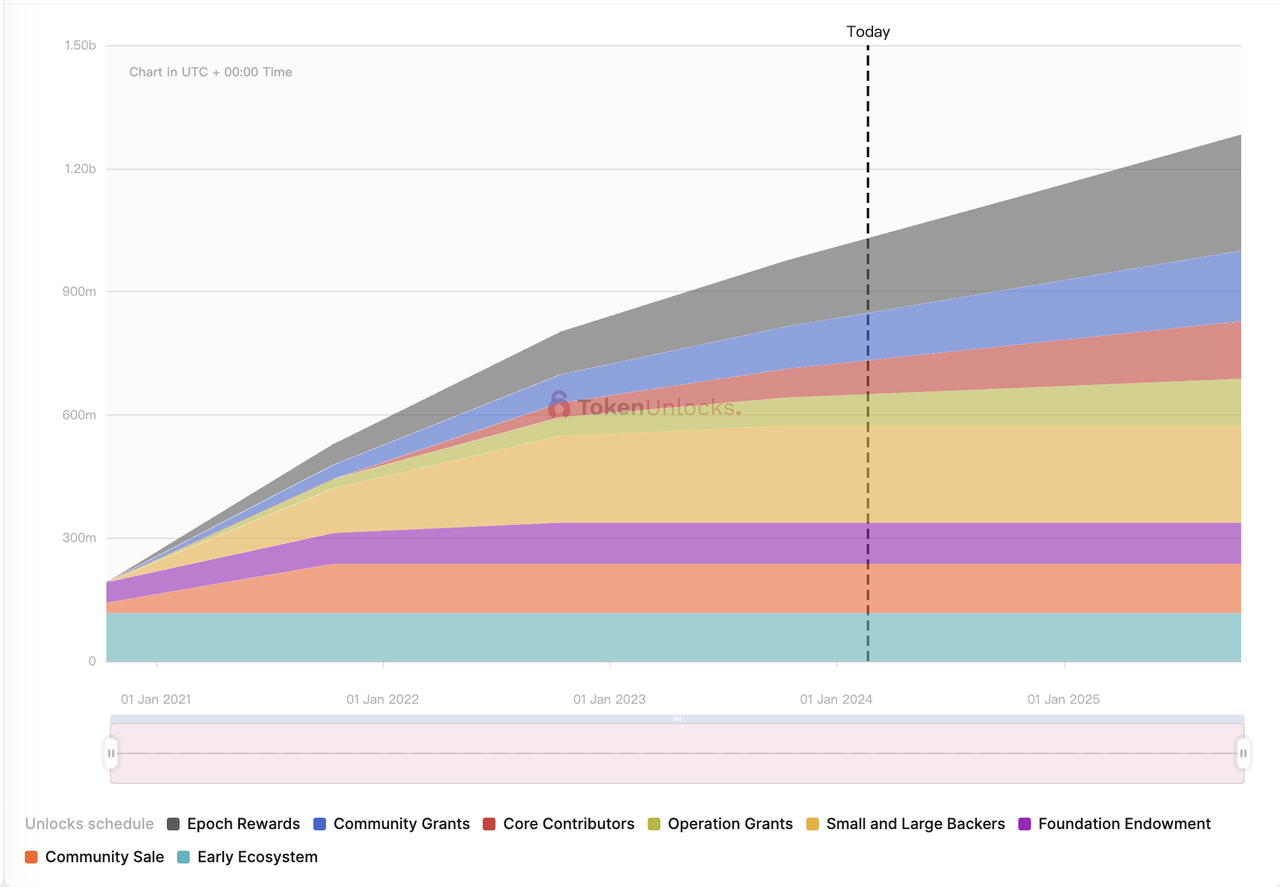
The native token NEAR provides support for smart contracts executed on the network, similar to ETH in the Ethereum network. However, it adopts a unique fee burning mechanism, where 70% of transaction fees are burned, and the remaining 30% is directly used for the original contract (developer rewards). This is a key difference compared to other smart contract blockchain protocols, as they do not have direct developer incentive measures "baked" into the protocol.
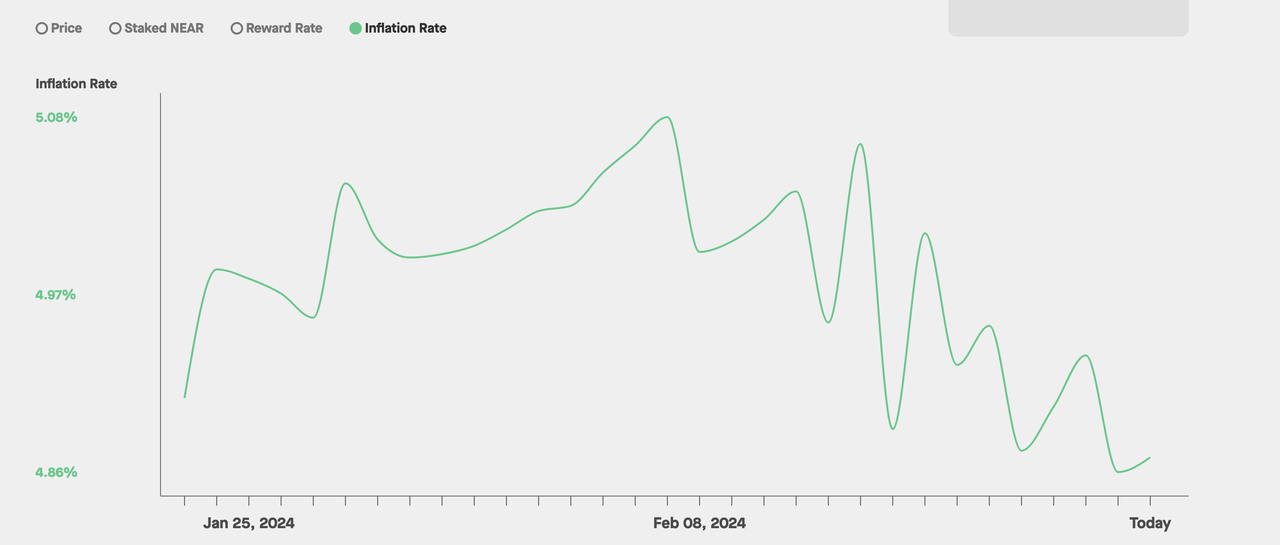
Currently, NEAR's market cap is approximately $58.63 billion, FDV is $66.58 billion, circulating token supply is 1,039,156,88, total token supply is 1,180,233,734, and the current token's annualized inflation is maintained at around 5%. Currently, Staking rewards are around 9.1%, net staking rewards are around 4.1%, and the staking ratio to total supply is 49.43% (582 million tokens).
5.2 Market Performance and Window Period Forecast
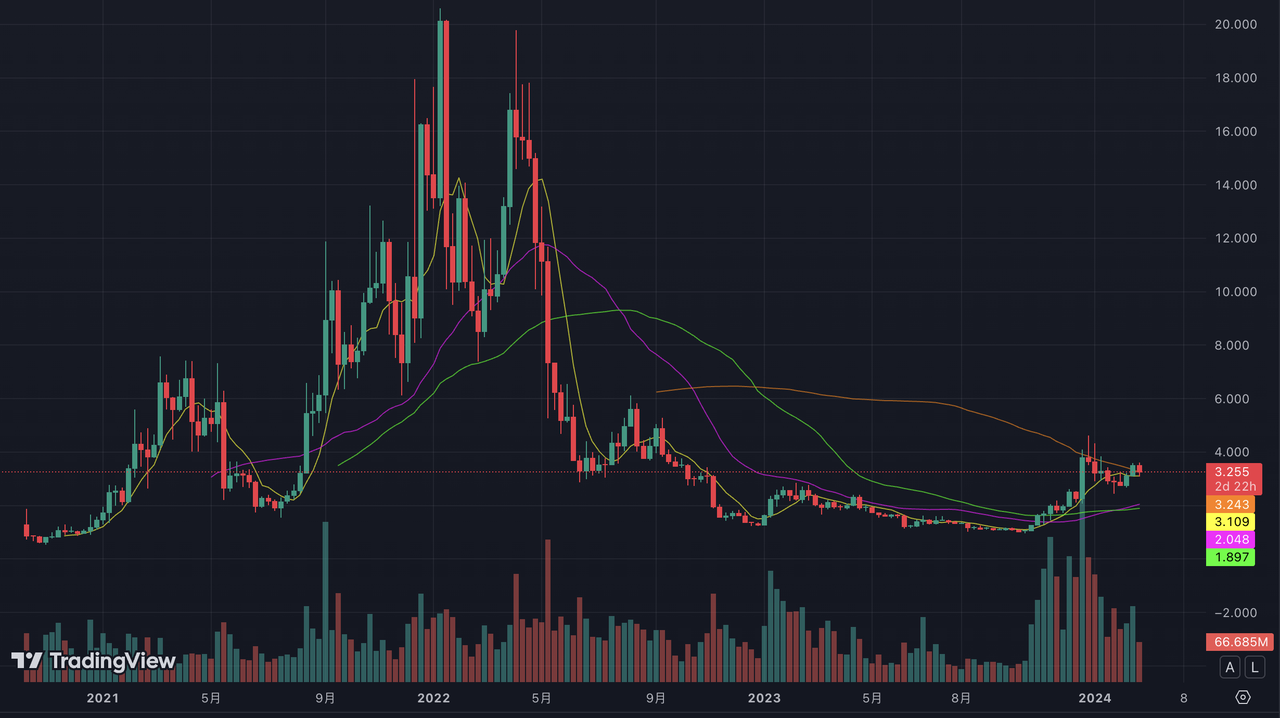
NEAR reached its peak at $20.15 during the last bull market, with a market cap of approximately $6 billion. Currently, the price is around $5.6, reaching a high of about $6.2, which is nearly double compared to two weeks ago. Considering the circulating supply of 1 billion tokens, the current market cap is equivalent to that of the previous bull market. This performance is only in the current ETF main market trend. It is expected that during the next bull market cycle, NEAR will have a better price performance, possibly surpassing ETH. Given the possibility of an overall market correction, investors are advised to consider multiple factors when making judgments and decisions.
6. Conclusion
Recently, NEAR has shown significant growth in the market, but its overall market cap as a public chain project is relatively small. Combined with the market actions related to Layer1, ZK virtual machine, DA, chain abstraction, etc., it is expected to have a more impressive performance as the overall market trend rises. However, the associated risks are also related to these factors, especially in terms of narrative performance and the matching of product progress with expectations, which require continuous monitoring and comprehensive analysis.
As a Layer1 public chain project, NEAR has entered a mature stage. Its sharding technology, developed by one of the authors of the Transformer paper, is the project's most important advantage and has withstood the test in the market, with an average TPS of around 300. Additionally, there are clear signs of an increase in the number of developers in the past three months, indicating that NEAR's ecosystem is slowly recovering and becoming more active. In the future, with the gradual advancement of sharding technology, zkWASM, and the ultimate vision of chain abstraction, NEAR is bound to have a broader prospect and potential for growth.
免责声明:本文章仅代表作者个人观点,不代表本平台的立场和观点。本文章仅供信息分享,不构成对任何人的任何投资建议。用户与作者之间的任何争议,与本平台无关。如网页中刊载的文章或图片涉及侵权,请提供相关的权利证明和身份证明发送邮件到support@aicoin.com,本平台相关工作人员将会进行核查。




